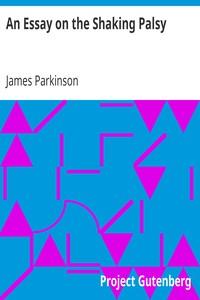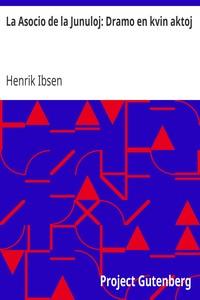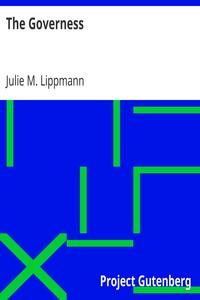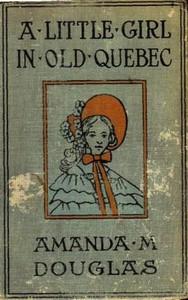|
|
Read this ebook for free! No credit card needed, absolutely nothing to pay.Words: 14586 in 4 pages
This is an ebook sharing website. You can read the uploaded ebooks for free here. No credit cards needed, nothing to pay. If you want to own a digital copy of the ebook, or want to read offline with your favorite ebook-reader, then you can choose to buy and download the ebook.

: An Essay on the Shaking Palsy by Parkinson James - Parkinson's disease Medicine@FreeBooksWed 07 Jun, 2023 PATHOGNOMONIC SYMPTOMS EXAMINED--TREMOR COACTUS--SCELOTYRBE FESTINANS 19 SHAKING PALSY DISTINGUISHED FROM OTHER DISEASES WITH WHICH IT MAY BE CONFOUNDED 27 CONSIDERATIONS RESPECTING THE MEANS OF CURE 56 AN ESSAY ON THE SHAKING PALSY. DEFINITION--HISTORY--ILLUSTRATIVE CASES. SHAKING PALSY. Involuntary tremulous motion, with lessened muscular power, in parts not in action and even when supported; with a propensity to bend the trunk forwards, and to pass from a walking to a running pace: the senses and intellects being uninjured. HISTORY. So slight and nearly imperceptible are the first inroads of this malady, and so extremely slow is its progress, that it rarely happens, that the patient can form any recollection of the precise period of its commencement. The first symptoms perceived are, a slight sense of weakness, with a proneness to trembling in some particular part; sometimes in the head, but most commonly in one of the hands and arms. These symptoms gradually increase in the part first affected; and at an uncertain period, but seldom in less than twelvemonths or more, the morbid influence is felt in some other part. Thus assuming one of the hands and arms to be first attacked, the other, at this period becomes similarly affected. After a few more months the patient is found to be less strict than usual in preserving an upright posture: this being most observable whilst walking, but sometimes whilst sitting or standing. Sometime after the appearance of this symptom, and during its slow increase, one of the legs is discovered slightly to tremble, and is also found to suffer fatigue sooner than the leg of the other side: and in a few months this limb becomes agitated by similar tremblings, and suffers a similar loss of power. Hitherto the patient will have experienced but little inconvenience; and befriended by the strong influence of habitual endurance, would perhaps seldom think of his being the subject of disease, except when reminded of it by the unsteadiness of his hand, whilst writing or employing himself in any nicer kind of manipulation. But as the disease proceeds, similar employments are accomplished with considerable difficulty, the hand failing to answer with exactness to the dictates of the will. Walking becomes a task which cannot be performed without considerable attention. The legs are not raised to that height, or with that promptitude which the will directs, so that the utmost care is necessary to prevent frequent falls. At this period the patient experiences much inconvenience, which unhappily is found daily to increase. The submission of the limbs to the directions of the will can hardly ever be obtained in the performance of the most ordinary offices of life. The fingers cannot be disposed of in the proposed directions, and applied with certainty to any proposed point. As time and the disease proceed, difficulties increase: writing can now be hardly at all accomplished; and reading, from the tremulous motion, is accomplished with some difficulty. Whilst at meals the fork not being duly directed frequently fails to raise the morsel from the plate: which, when seized, is with much difficulty conveyed to the mouth. At this period the patient seldom experiences a suspension of the agitation of his limbs. Commencing, for instance in one arm, the wearisome agitation is borne until beyond sufferance, when by suddenly changing the posture it is for a time stopped in that limb, to commence, generally, in less than a minute in one of the legs, or in the arm of the other side. Harassed by this tormenting round, the patient has recourse to walking, a mode of exercise to which the sufferers from this malady are in general partial; owing to their attention being thereby somewhat diverted from their unpleasant feelings, by the care and exertion required to ensure its safe performance. But as the malady proceeds, even this temporary mitigation of suffering from the agitation of the limbs is denied. The propensity to lean forward becomes invincible, and the patient is thereby forced to step on the toes and fore part of the feet, whilst the upper part of the body is thrown so far forward as to render it difficult to avoid falling on the face. In some cases, when this state of the malady is attained, the patient can no longer exercise himself by walking in his usual manner, but is thrown on the toes and forepart of the feet; being, at the same time, irresistibly impelled to take much quicker and shorter steps, and thereby to adopt unwillingly a running pace. In some cases it is found necessary entirely to substitute running for walking; since otherwise the patient, on proceeding only a very few paces, would inevitably fall. Free books android app tbrJar TBR JAR Read Free books online gutenberg More posts by @FreeBooks
: La Asocio de la Junuloj: Dramo en kvin aktoj by Ibsen Henrik Tangerud Odd Translator - Drama Esperanto@FreeBooksWed 07 Jun, 2023

: The Coming Wave; Or The Hidden Treasure of High Rock by Optic Oliver - Conduct of life Juvenile fiction; Treasure troves Juvenile fiction; Shipwrecks Juvenile fiction; Ships Juvenile fiction Children's Fiction@FreeBooksWed 07 Jun, 2023
|
Terms of Use Stock Market News! © gutenberg.org.in2025 All Rights reserved.






